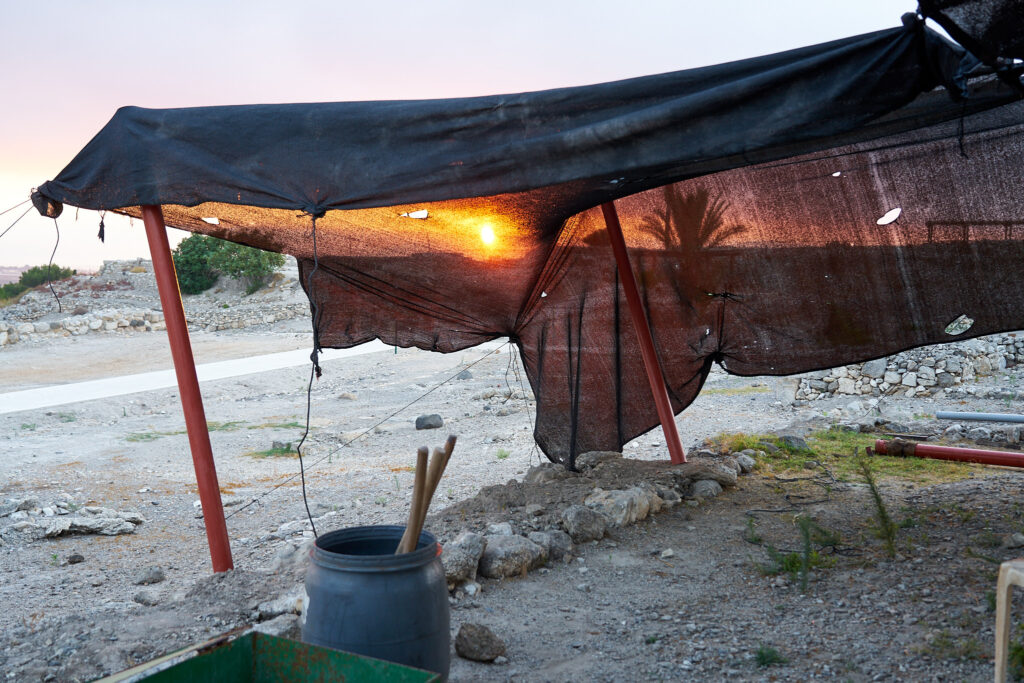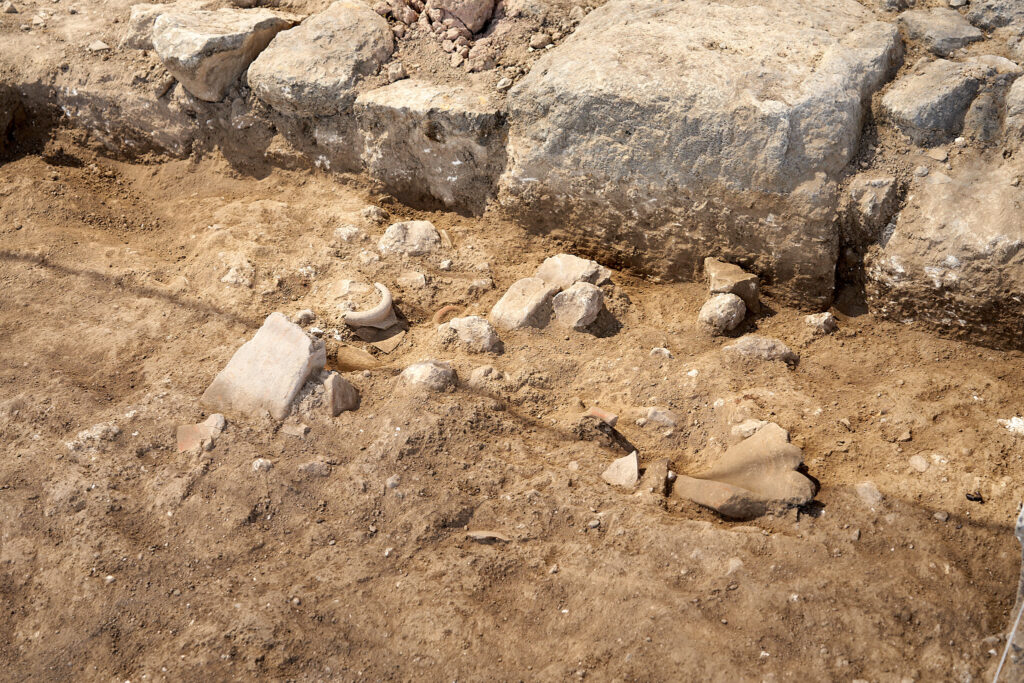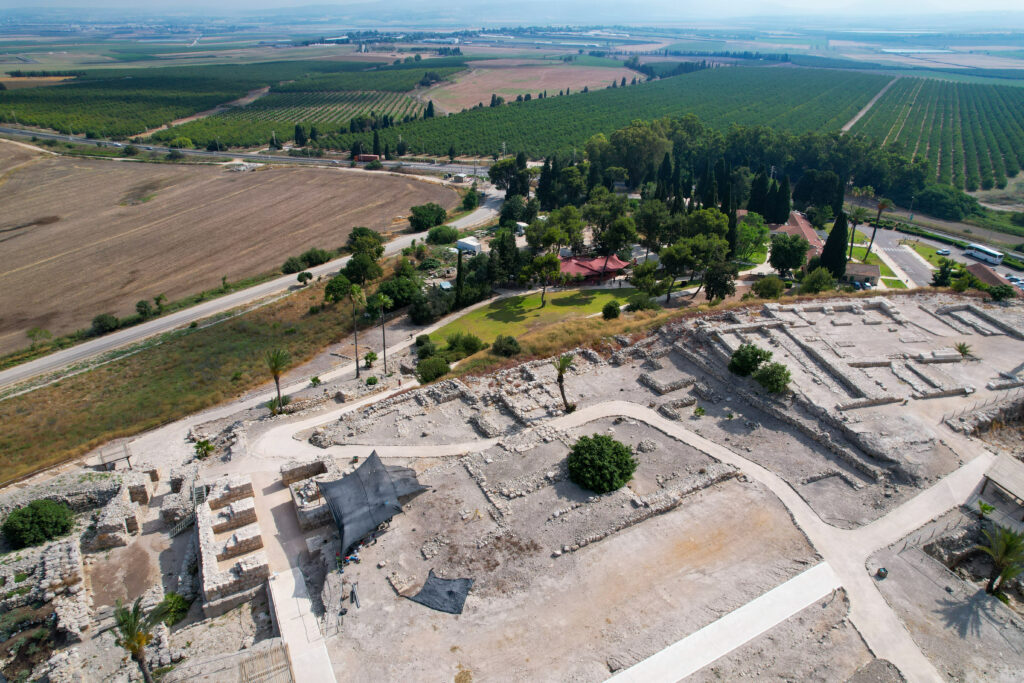
It feels as though I’m getting acclimated to the hot weather and 5:00 AM (Jerusalem Time Zone) starting time. I had a quite enjoyable day on the dig. I did some more drone photography over lunch time. We see relatively few tourists, quite a difference from pre-Covid days.
The area we’re working in is from the Assyrian time period. We did some cleanup and photogrammetric documenting of what had already been excavated by the Chicago University people about a hundred years ago. After that we were able to start going deeper. We don’t know yet if we’re in eighth or ninth century BC. The locus I’ve been assigned to has proven quite interesting. We found a bunch of plaster-type material. Is it floor or collapsed walls? There are pottery pieces from some nice-sized vessels. I suppose the pottery experts will be able to figure out their origin. We also find some animal bones. Margaret, our area supervisor, says they learn much more from animal bones than from pottery. The material we’re finding is indicative of being indoors, possibly resting on a floor. I’m still looking for a plaque that says, “Solomon ate here.”

Some exposed pottery pieces within our locus. We remove the dirt in layers of 5 to 10 centimeters. These pieces were exposed, then the area was documented with photography and point surveying. On the next layer we removed most of them. The flat piece may be a grinding stone, according to Dr. Finkelstein.

Caleb is working in Area Z, next to the Solomonic Gate in the lower left of the picture. Israel Finkelstein says the gate is later than Solomon’s time. This drone shot is looking out toward the visitor’s center. The buildings in the trees were built with Rockefeller money during the Chicago expedition.
After pottery washing I might listen in on the field techniques class. After dinner there will likely be another lecture. Last night’s was by co-director Matthew Adams. He told us how a tell such as Megiddo is built over the millennia. Not so much the destruction of marauding armies, but people just bringing lots of stuff into their living area. Sometimes knocking down their house and building bigger and better. Digging pits to bury people or things.
The history of this site is mind-boggling. Read about how Josiah, the righteous king of Judah, met his end in 2 Kings 23.